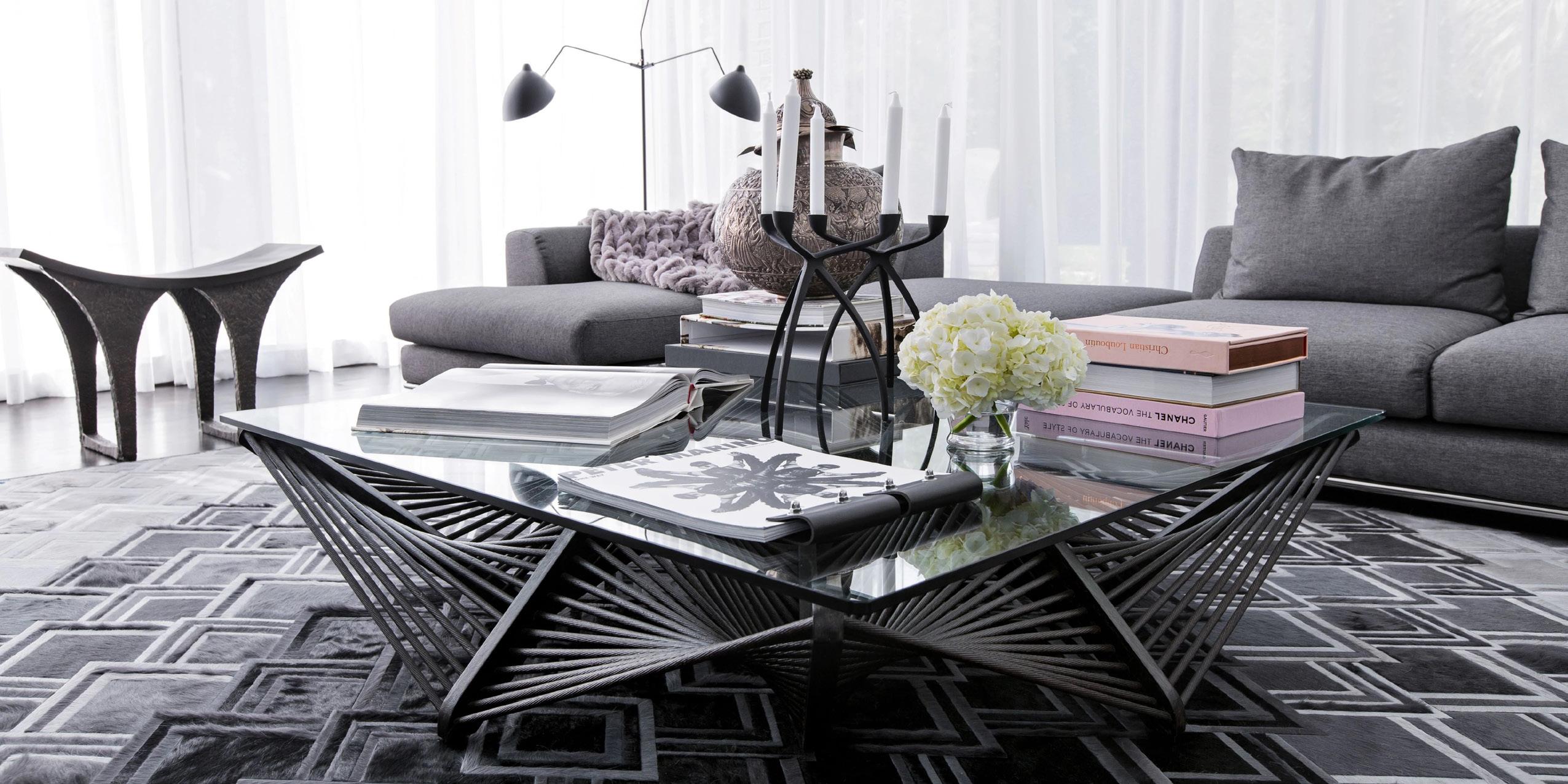










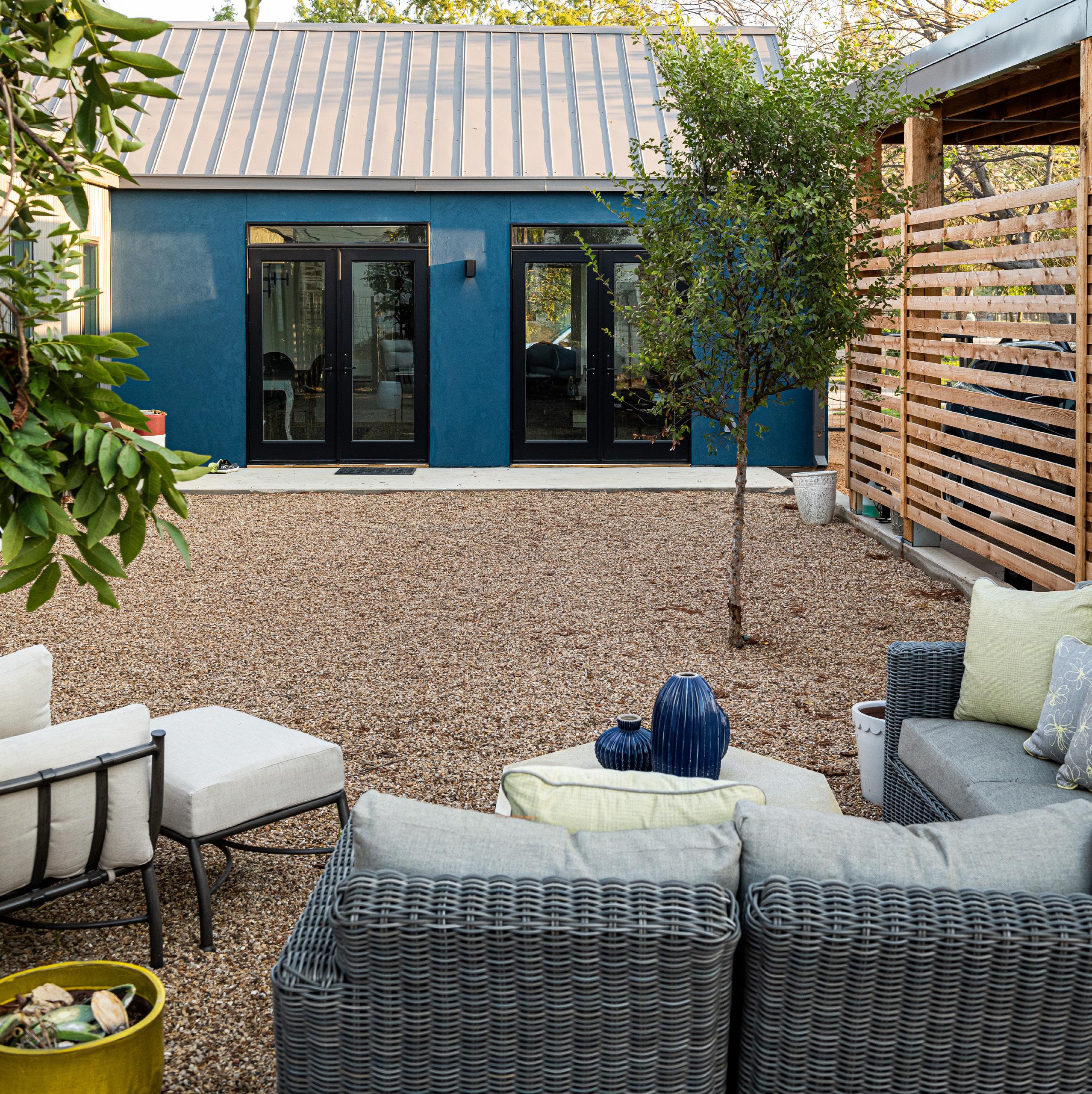 by Hardy Haberman
by Hardy Haberman
Imagine being able to create and customize your new home online and have it ready for occupancy in a matter of weeks, not months. This is the concept behind HiFAB a new modular home construction company in Grand Prairie. A venture of Texas-based Oaxaca Interests, HiFAB will be dedicated to creating modular homes. Called Hacien das, the homes are designed by San Antonio’s renowned
architecture firm Lake|Flato. They will be HiFAB’s first product and will hit the market in the first quarter of 2023, but can be ordered now. These homes will be available exclusively in Texas. Using interactive technology, con sumers will be able to customize their homes and watch the building process online from start to finish. Oaxaca Interests and Lake|Flato successfully tested the original Haciendas in Dallas.
 // hifab - photo: robert g gomez
// hifab - photo: robert g gomez
The Residential development is entering it’s phase III and has been highly successful. Known for their emphasis on mindful living, Located just a few blocks from The Belmont Hotel and Sylvan Thirty in West Dallas, Haciendas are redefining urban living and seamlessly integrate with the existing neighborhood. Additional Haciendas, built in HiFAB’s factory will mirror those built in Dallas in terms of sustainable design features and building practices. From biophilic indoor/
outdoor connections and fresh air exchange filtration systems to the elimination of source pollutants, aided by True Zero VOC paints and tile setting materials that are Greenguard Gold Certified. These new homes are inten tionally designed with wellness and functionality in mind.
“Lake|Flato’s early house designs offered clients creative and economical ways to connect with the outdoors,” said Ted Flato, FAIA, founding partner of Lake|Flato Architects and HiFAB board member. “They were inher
 // hifab - photo: robert tsai
// hifab - photo: robert tsai

ently sustainable, taking cues from their surroundings by combining passive systems, natural materials and local building traditions to create uniquely crafted residences.”
The new venture hopes to reach a broader audience through streamlined, scalable options that reflects those same enduring qualities of nature, place and restraint. HiFAB homes will be available to both private clients and developers. Clients will initially be able to choose from two different sizes on the HiFAB website,:

• The Studio - 2 bedroom / 2 bath
• The Standard - 3 bedroom / 2 bath
Each comes with 3 different layouts and the ability for clients to customize tiles, paint colors and other finishes. Clients will be able to monitor progress of their home online as it’s being manufactured.
Studios start at $249k; Standards start at $375k; prices include design, assembly, on-site delivery and set up.
// hifabphoto: robert g gomez
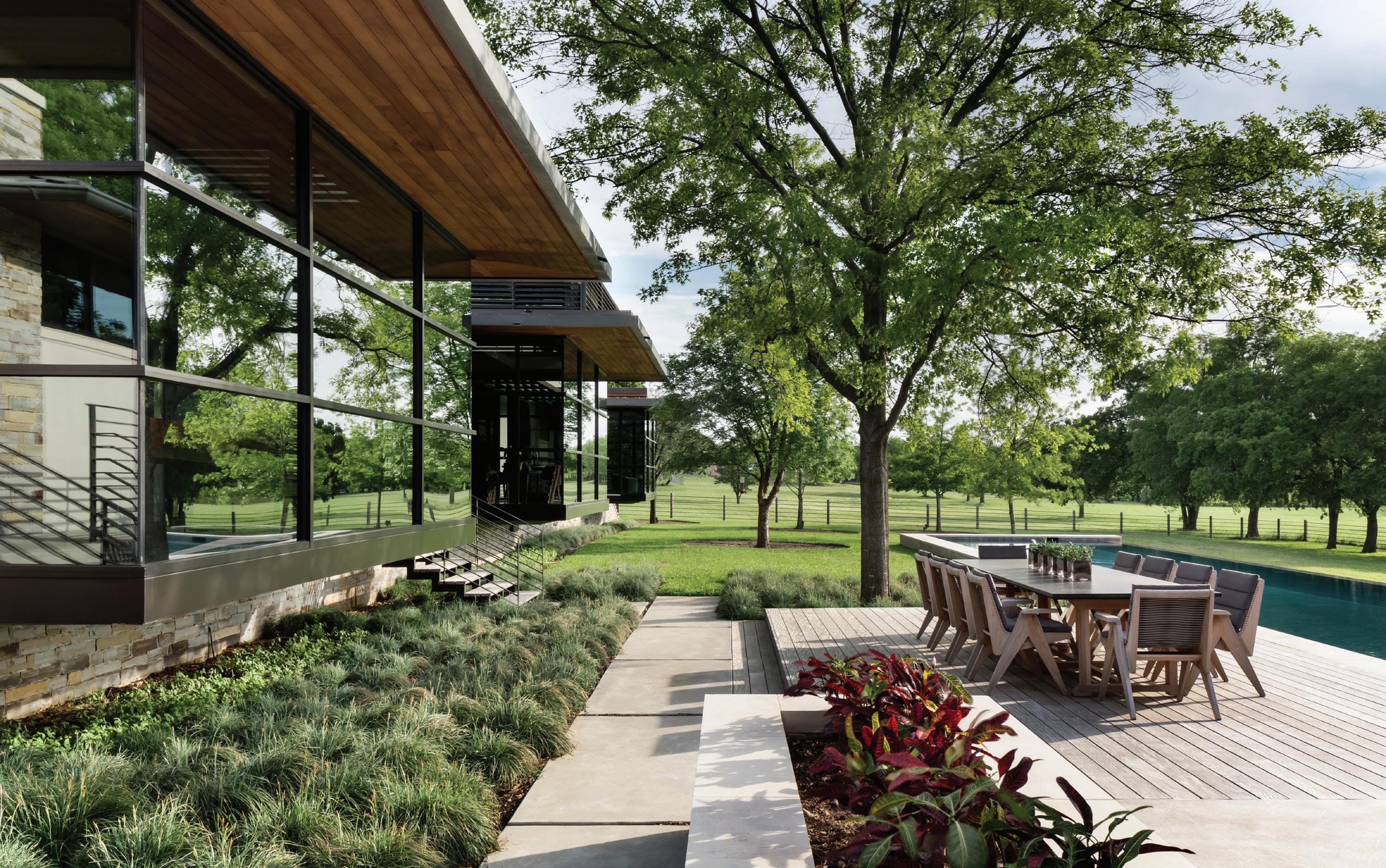

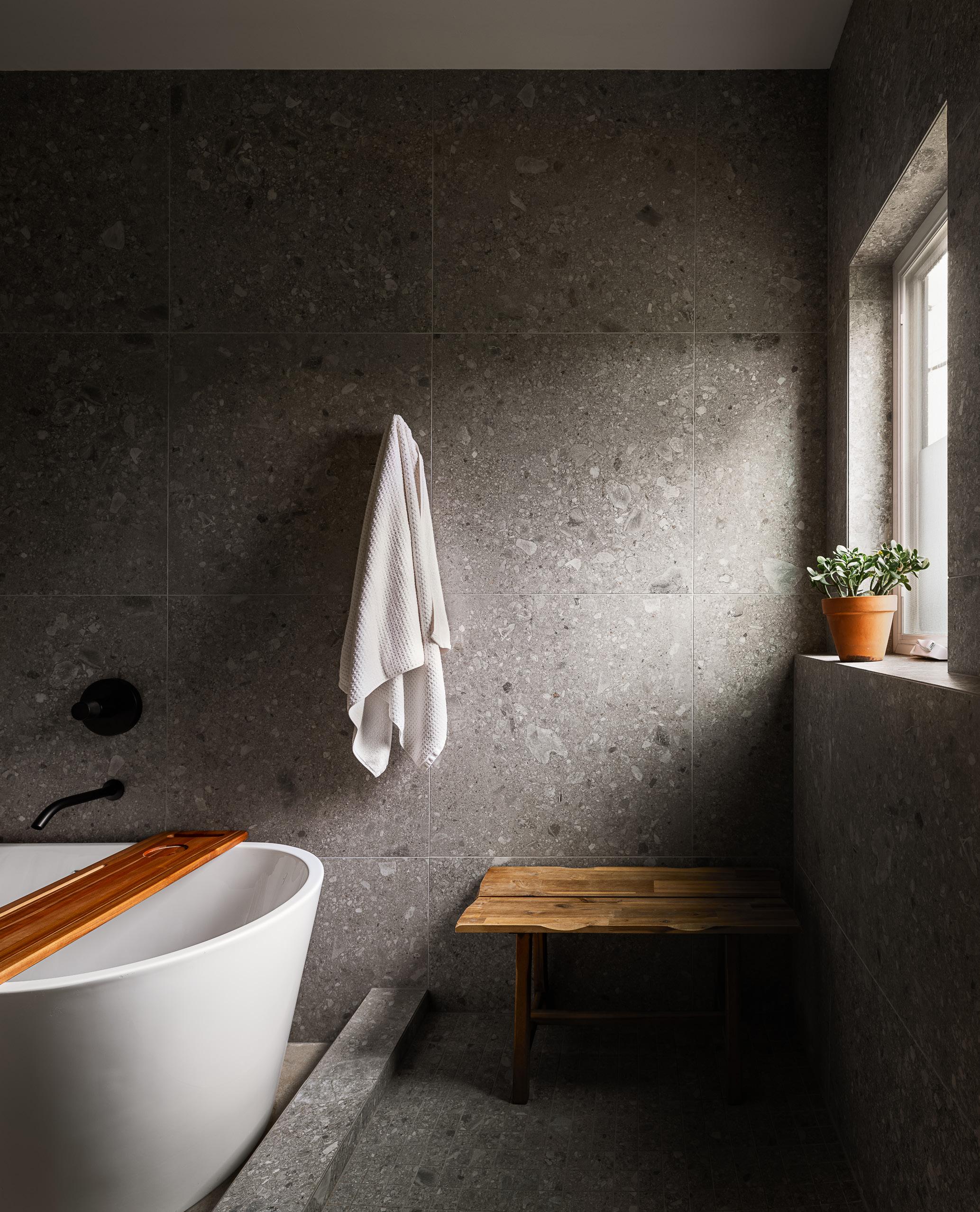



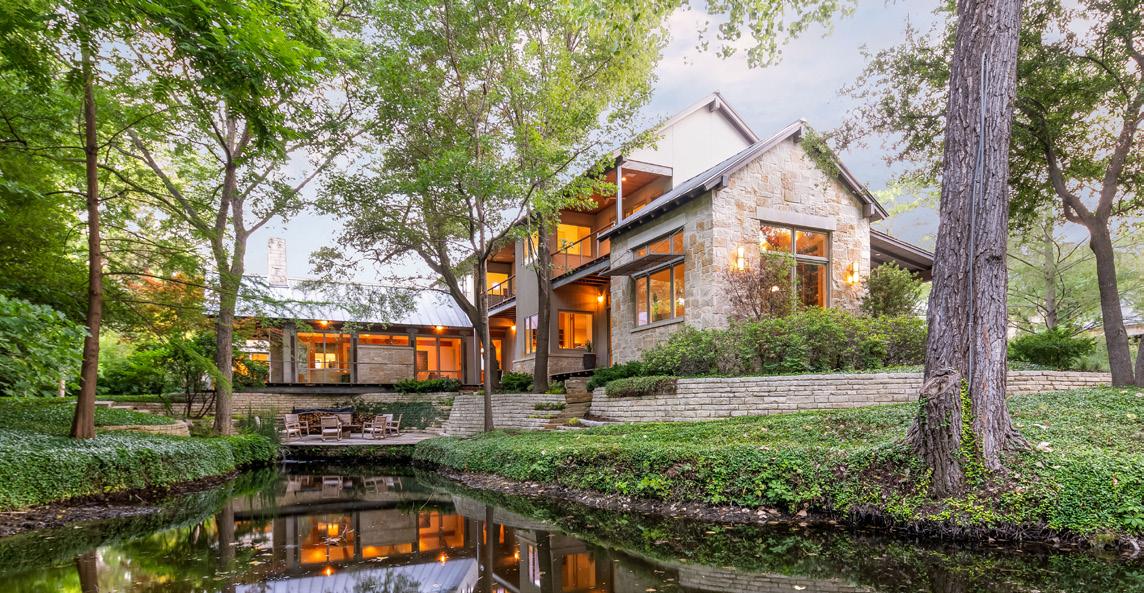
HiFAB’s goal is to become a production modular home builder that builds up to 300 homes per year, which in turn will bring more homes online faster while positively impacting the community through the delivery of well designed attainable housing. This segment is an important portion of the single-family home industry that’s increasingly getting priced out of the market.
Design partner Lake|Flato was established in 1984 and has gained national recognition for a place-based approach to design and building that successfully

merges with the landscape. With work across the Unit ed States, Mexico, and the Caribbean, the firm seeks to design projects that are intrinsically rooted to the culture, climate and context of each unique place. By employ ing sustainable strategies in a wide variety of building types and scales, Lake|Flato designs architecture that conserves energy and natural resources while creating high performance buildings.
For more information about HiFAB, hifab.co and Haciendas Dallas - dallashaciendas.com
// hifab - photo: robert tsai
 by Kendall Morgan
by Kendall Morgan
Anthony Sonnenberg’s rococo ceramics and jewelry are a multi-layered maximalist’s dream.

With a practice encompassing installations, performance, and sculpture, Anthony Sonnenberg’s work places him firmly “somewhere between the ornately beautiful and the grotesque.”
In his current show, “Beauty Parlor,” at Conduit Gallery (on view through November 26), the artist shows a mix of drippy candelabras, vases, and urns along with a performance video and collection of gorgeously over-thetop jewelry. All of which reference his research into the themes of queerness, decoration, and artificiality.
candelabra (to know the magic)


Sonnenberg is in the perfect moment for his work to be truly appreciated. Craft has recently been looked at through a new lens in art, and the fashion runways are full of queer positivity and surreal accessories. But the truth is, it has taken a bit of time for everyone else to catch up with his singular vision.
Growing up in a small Texas town, his first artistic experience was making little sculptures out of wax taken from his dentist father. With no fundamental concept of
creating work for a living, Sonnenberg instead decided to play it safe, studying art history at the University of Texas because it had a paycheck attached.
Yet the allure of making was undeniable. After mounting his first solo show in Austin, Sonnenberg earned a master of fine arts in sculpture at the University of Washington in 2012. He also began developing a unique technique that was the antithesis of throwing plates or sculpting figurines.

campagna vase (to burn always with that hard gems like flame)



“Very early on (working) in ceramics, I knew I didn’t want to do straight figurative work,” he recalls. “So much of the last ten years has been diving into why I like it. I think at first, I was trying to figure out a way to do a decent copy of Meissen (porcelain), but now I know there are these huge factories making these pieces. Now I’m like, ‘Thank God I didn’t go down that road.’”

While figuring out his methodology, Sonnenberg found himself on the teaching path, with stints at his alma mater, the Museum of Fine Arts Houston’s Glassell School of Art, and the University of Arkansas in Fayetteville (where he still resides). The halls of academia allowed him the space literally and figuratively to perfect his technique. And he also discovered the perfect place to show the work in the form of Conduit Gallery.
“From the moment we started working with Anthony in 2015, we realized his voice was unique because he looks to the past the Rococo and Baroque art move ments, for example in order to speak to contemporary issues,” says Conduit director Danette Dufilho. “He con tinues to push these conversations by being ahead of the
curve in making work that challenges people to think differently about what they consider ‘fine art’ … and to look at materials and media once considered craft or functionally decorative.”
Sonnenberg refined a “slip dipping” method, coating found objects in the wet clay, letting them dry, and then firing the result on low heat. In the process, he burned out the source material to create something a bit more undefinable. By firing and glazing, again and again,
ceramic tchotchkes from thrift stores (including birds, animals, or teddy bears) morph into decadent objects, ornaments on acid. The resulting pieces look nothing like their former selves, yet the eye is tricked into an emotional connection. It’s a sensation Sonnenberg aligns with the artificiality of drag.
“It’s the overarching practice of looking at the why of decoration and the queer aspect of it. It’s like shows like Pose and RuPaul’s Drag Race showing queer people
 // golden camouflage (ghillie suit for a weird queer)
// golden camouflage (ghillie suit for a weird queer)


the grand green and red necklace

artist toggles from the fine art world to shelter mags, he has further tapped into the zeitgeist with his new jewelry.
A natural outgrow of his sculptural practice, his necklaces and rings reference everything from the artist’s identity to a curiosity stuffed wunderkammer. Sonnenberg’s delicate orchids crafted of sterling silver aren’t just an accessory to adorn oneself but also a subtle reference to queerness and all it stands for.

hijacking culture through talent and grit, and imagination because they know how important it is. In Pose, if you were a queer person of color in the city, all you could think of that stood between you and a rich white woman was what they looked like. So, they would spend all their free time stealing stuff to try and match those modes. You realize how important those things are, but then you also realize how much of a construction it is.”
Sonnenberg’s work is in the collections of Marguerite Hoffman, Deedie Rose, and the Crystal Bridges Museum of Art in Bentonville. His candelabras were featured this year in the tony World of Interiors magazine. But as the
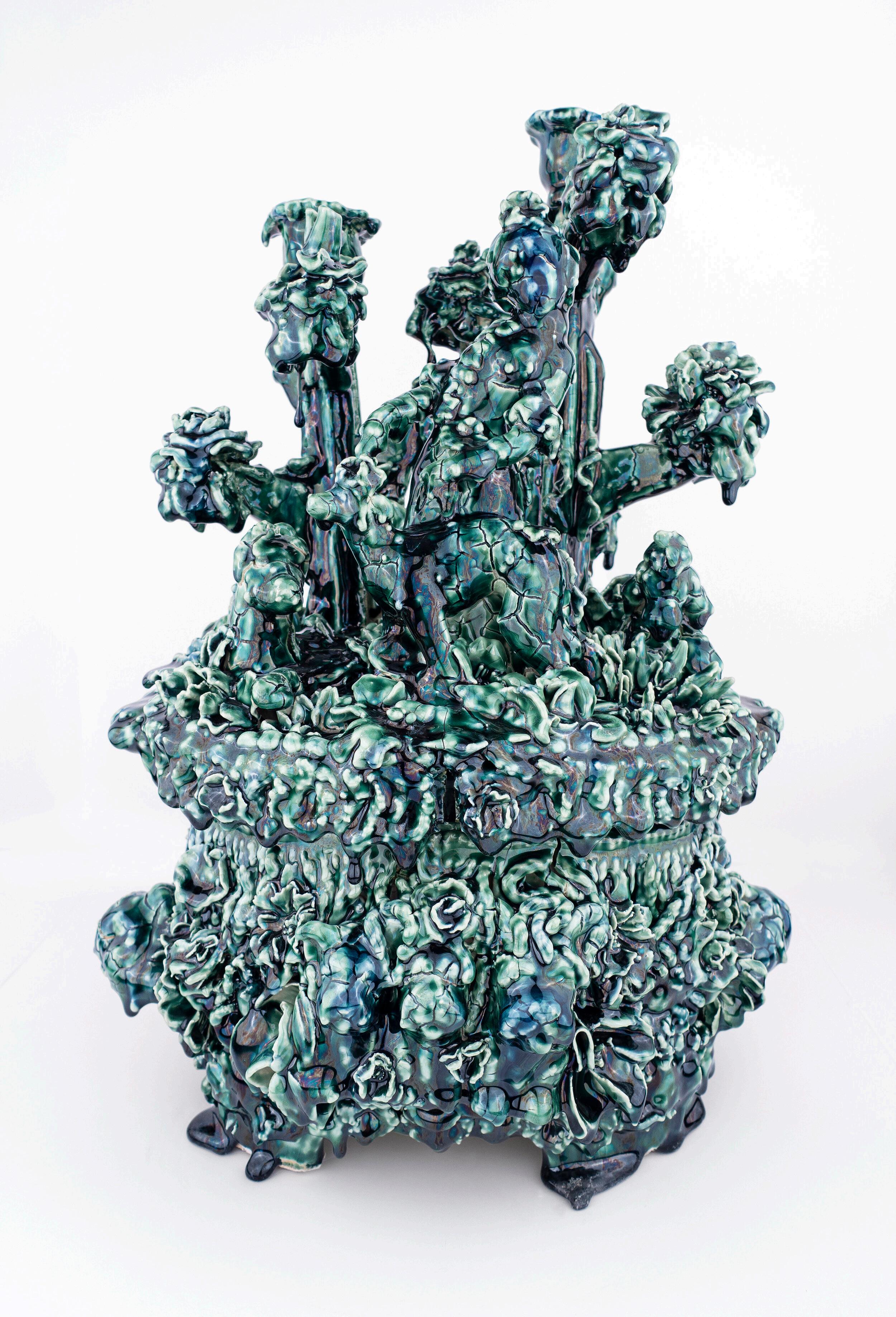
“Most people view queer people as exotic, extraordinary, delicate, and fragile, and that’s what I think people think about orchids,” he explains. “And in Victorian times, they looked so much like genitalia; there was a time people weren’t supposed to go into a room with orchids because they could cause hysteria.”
Sonnenberg will never tire of exploring the power of these beautiful jewels and objects. And he doesn’t mind if you pick up everything he’s putting down; nothing will keep him from the act of creation.
“I’m always thinking about decoration’s place in the hierarchy of art, and it always seems lower and less er,” he muses. “There seems to be a challenge around (wearable) sculpture; it is an art and decorative arts, but it’s also fashion, and the art world just doesn’t know what to do with that. I love a challenge, and I love to be punk rock in my own rococo way.”

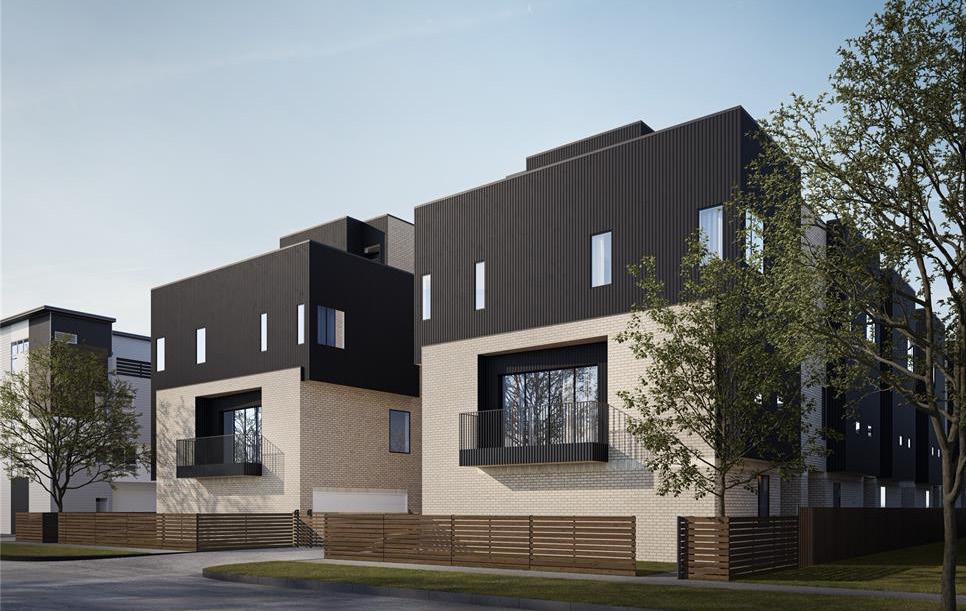







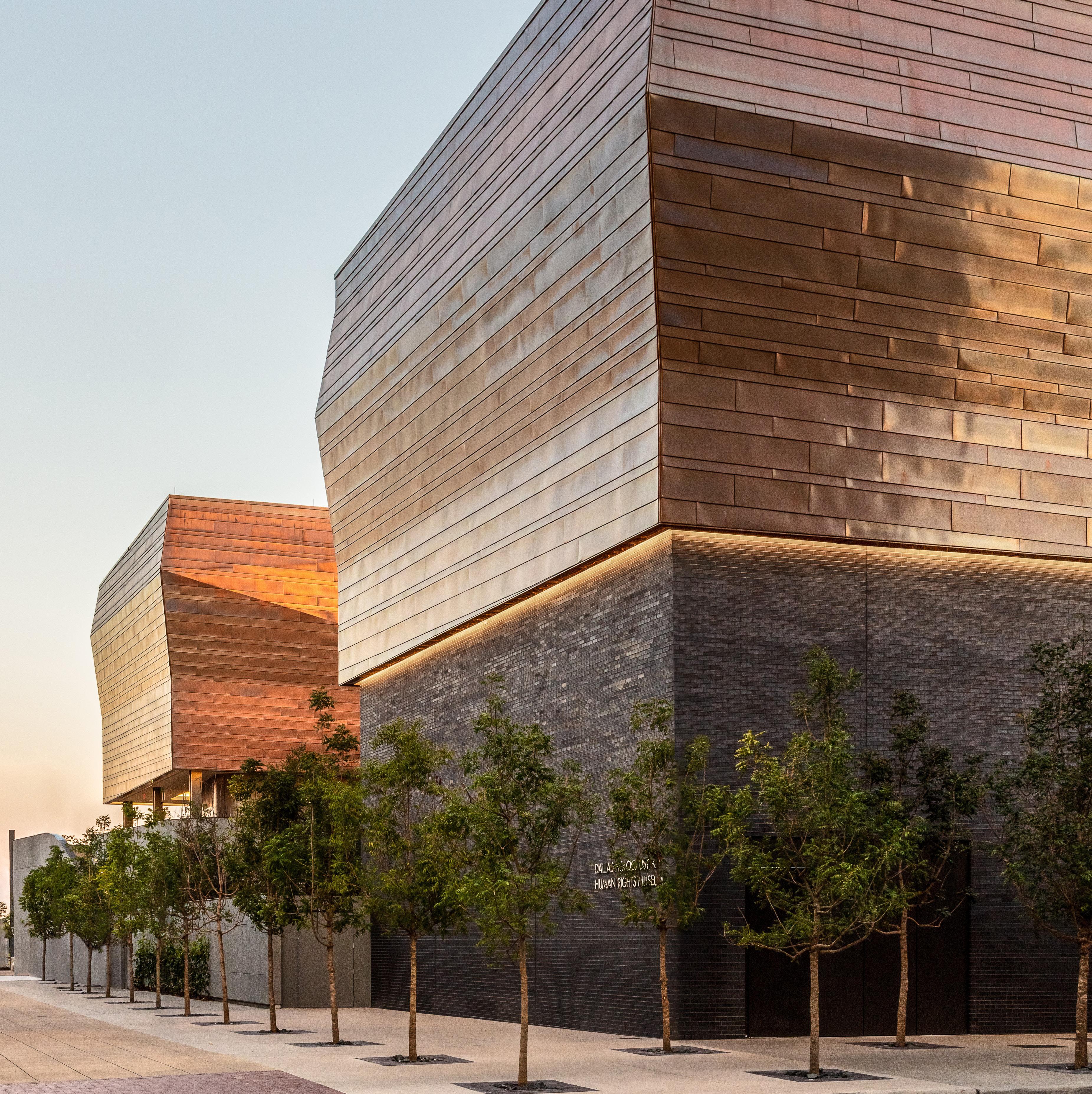
The webpage for Omniplan’s case study of the Dallas Holocaust and Human Rights Museum begins with a question, “How can a building educate and change the world?” The homepage of the Museum itself seems to answer it: “It’s about humanity. Yesterday. Today. Tomorrow.” Omniplan is an architecture firm that has been shaping Dallas for over 60 years with private and public architecture projects, but something of this emotional and historical magnitude is a rare and deep responsibility. How does a building contend with the plan of confronting the atrocities of the Holocaust? It works to

demonstrate both the profound human toll of doing noth ing when everything is at stake, and the hope that lashes against it when those that are not in harm’s way willingly put themselves in it for the sake of others.
The permanent exhibit is an experience, one that shapes the building itself and you as you pass through it. You begin with an orientation. The doors swing open automatically to a theater based on a timetable. You enter into a minimalist gray room with simple wooden benches. This room prepares you to understand and confront every
thing that proceeds from it in terms of the historical weight of what you’ll confront, and the visual aesthetics of the building. The minimalism is a timeless approach to the look of the interior, but it’s also an intentional gesture to put what the building offers at the forefront.

The way the first two rooms operate is also useful in how it puts you in a frame of mind to truly understand ev
erything that will proceed it, though likely unintentional in some respects; the automated nature of the doors that allow you into the theater, and then into the stair well, give you the feeling of being at the mercy of an abstract force that you cannot control. Once you enter the stairwell from the theater you are shown a diorama of the beginning of the Jewish faith. From there lights and a voice entreat you to move up the stairs to the next
landing, where the history of the Jews continue. Once you reach the third landing a video outlines the roots of the hatred and the stereotypes that have shaped the destiny of a people for thousands of years. You then proceed to a door where Hitler’s voice booms on the other side.

Once you pass through the door you’re confronted with the beginning of the Nazis. Everything is organized on
a timeline from these moments and everything, in every corner of the world involved or touched by Nazis, is pre sented as you proceed through the halls of the timeline of the Holocaust. Placards and entire walls list each pro gression that would lead to the creation of the concentra tion and death camps, and the testimonies of those that experienced each of them are available to watch on video screens with personal earphones so that they can tell you
their stories. The transition from the theater to the stairs to these hallways is a more obvious change in levels, but as you move from one part of the exhibit to another there are more subtle shifts in elevation. The building is less structurally and visually audacious than the initial concept renderings suggest it might have been- the stairway that returns you to the lobby appears to have originally been

envisioned as a small scale Guggenheim in concrete-but the building embraces itself without and within. Even the copper itself mimics the interior path of the permanent exhibit.
The choice of copper to crown the structure is as much philosophical as it is aesthetic. The copper, like the Statue
of Liberty, will develop a patina over time, which is meant to symbolize “perseverance in weathering the storm.”
Copper has been chosen as a cladding for buildings for this reason before, the de Young Museum in San Francis co for instance, but this added layer of meaning is seen through as the copper continues into the building itself, and joins you as you finish the journey of the permanent exhibit. The copper within the building will forever retain its
brilliance, and will stand in juxtaposition against the rich green it will show on the outside – reminding us of itself and what it has endured.
It’s fitting that OmniPlan’s website asks a question, as we are all left with so many in the face of unspeakable horror. How? Why? The museum succeeds in fulfilling its maxim to “Embrace ideals, challenge reality, participate in repair,”

by connecting the cause of the Nuremberg trial, the need to establish human rights to prevent or answer injustice, and even the injustices that would follow the Holocaust throughout the world. These moments in human history are not books on a shelf; they are not separate and contained. They have happened and are happening in the same place, which of course is the planet we all share. Time and geography are poor distinctions when considering the magnitude of what is inflicted on those who lose their lives, literally and figuratively, to unanswered hate. Distance, in all its forms, cannot separate us from this.
Yesterday is not so far away as we think, and neither is tomorrow.
dallas holocaust and human rights museum 300 n houston st, dallas, tx 75202 dhhrm.org



This year’s tour includes a contemporary take and clas sic mid-century modern (MCM) designs. The first historic home on the tour, on Maple Springs, was designed and
occupied by Dallas architect Harold Prinz, AIA in 1950, which boasts the 1950 AIA Dallas Design Award: Honor for Excellence in Residential Architecture.
In Preston Hollow, a MCM home on Northaven tells the story of resiliency, rebuilt after incurring tornado damage in 2019.
 // architect a gruppo image: charles davis smith faia
AIA Dallas 16th Annual Tour of Homes featuring cutting-edge residential design from 1950 to today.
// architect a gruppo image: charles davis smith faia
AIA Dallas 16th Annual Tour of Homes featuring cutting-edge residential design from 1950 to today.
Featured Architecture Firms include A Gruppo Archi tects; Bernbaum/Magadini Architects; Domi Works LLC; Harold Prinz, AIA (posthumously); JRAF Studio; Laura Juarez Baggett Studio; M Gooden Design; Malone Max well Dennehy Architects; and Modern Living Dwellings.
To bring you the best of today’s residential architecture, the tour also includes homes in Colleyville, Southlake, and University Park, and in Dallas neighborhoods like Bluffview and Little Forest Hills. The Tour celebrates the beauty and diversity of Dallas residential architecture by featuring homes with a variety of styles, square footage, and price points. Across the tour, guests will experience cutting-edge design, innovative uses of traditional mate rials, sustainably minded spaces, and the unique history of each home.
laura baggett studio image: charles davis smith faia


A separately ticketed premiere party is Wednesday, November 2. This event is hosted at an exclusive Turtle Creek home not on the general admission tour. Tickets are available for $125 and include live music, passed hors d’oeuvres, open bar, conversations with the tour architects, and a ticket to self-guided weekend tour.

All ticket holders will receive access to exclusive tour content on the AIA Dallas app the weekend of the event, including maps, descriptions, and photos.
Proceeds from the tour benefit AIA Dallas, the local chapter of the American Institute of Architects, which aims to advance architecture and design.



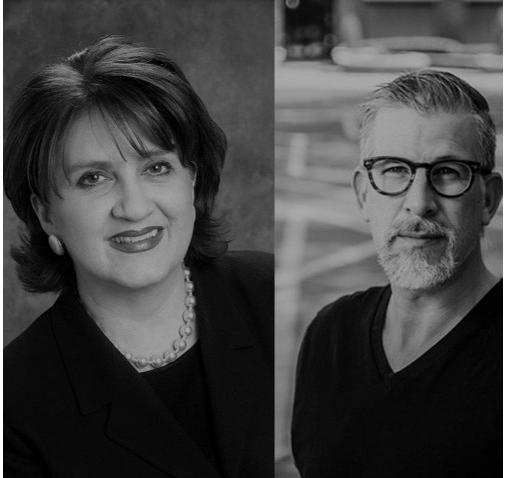 LIGHTING: Jon Sayah
ARCHITECTURE: Ron Stelmarksi
LIGHTING: Jon Sayah
ARCHITECTURE: Ron Stelmarksi
// horizonte sofa the new system by marcio kogan / studio mk27 takes shape from a suspended base. available. smink

// hampton forge maris partial gold 40-piece set available. neimanmarcus

// yanzi table is a lightweight composition of graphic signs. available. artemide

November 16, 2022 // 7pm
Dallas Archtecture Forum
Discover the Arts District + Fair Park Tram Tour
Contemporary
Nasher Sculpture Center
Dallas Museum Of Art
Crow Museum Of Asian Art
The Modern Art
The Amon Carter Museum of American Art
Kirk Hopper Fine Art
Valley House Gallery
TOMMY FITZPATRICK + KIM CADMUS OWENS
Holly Johnson Gallery
GABRIEL DAWE + CYNTHIA MULCAHY
Talley Dunn Gallery
SIMON VEGA + ADAM KNOCHE
Liliana Bloch Gallery
Cris Worley Fine Arts
Barry Whistler Gallery
Galleri Urbane
Various Small Fires
